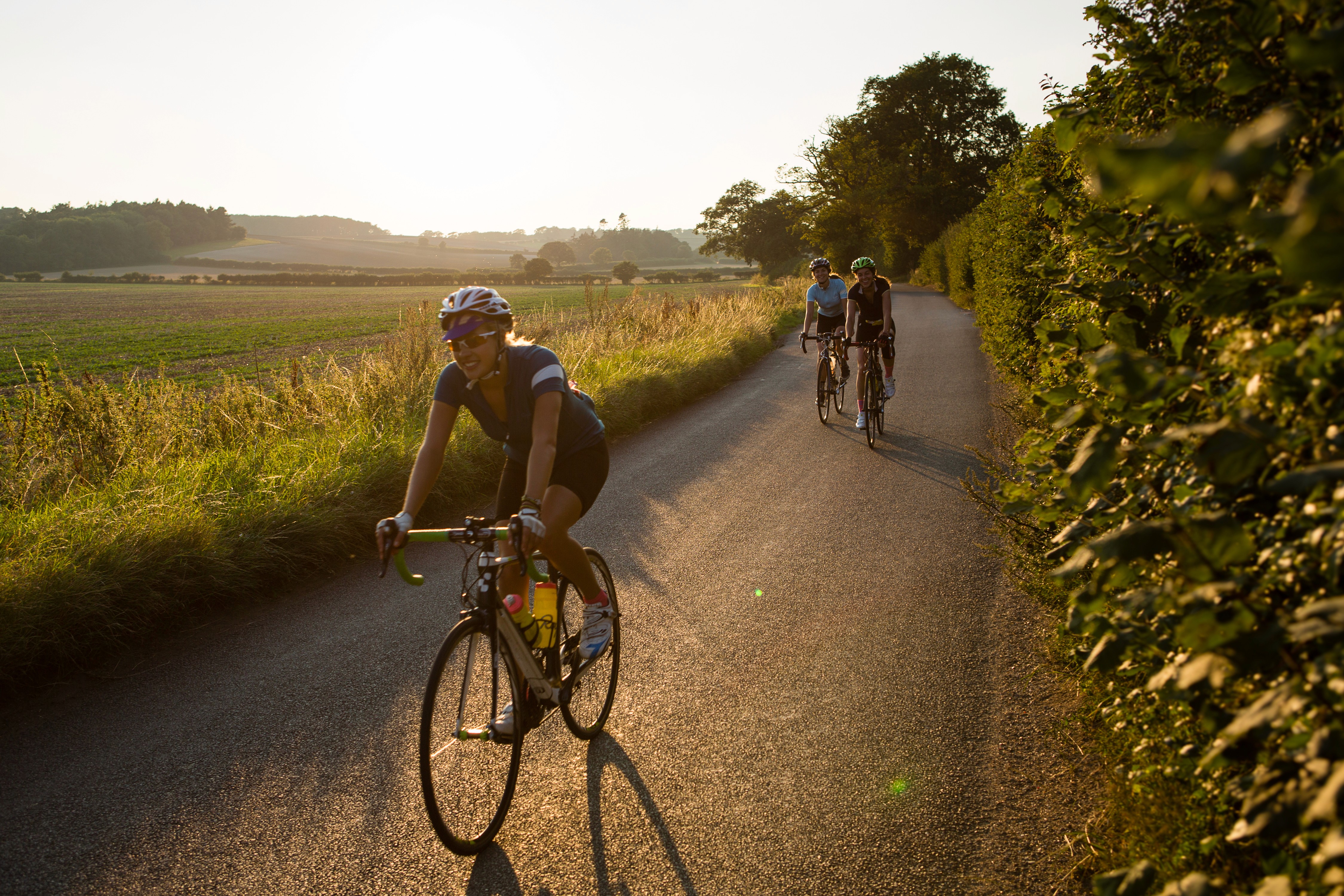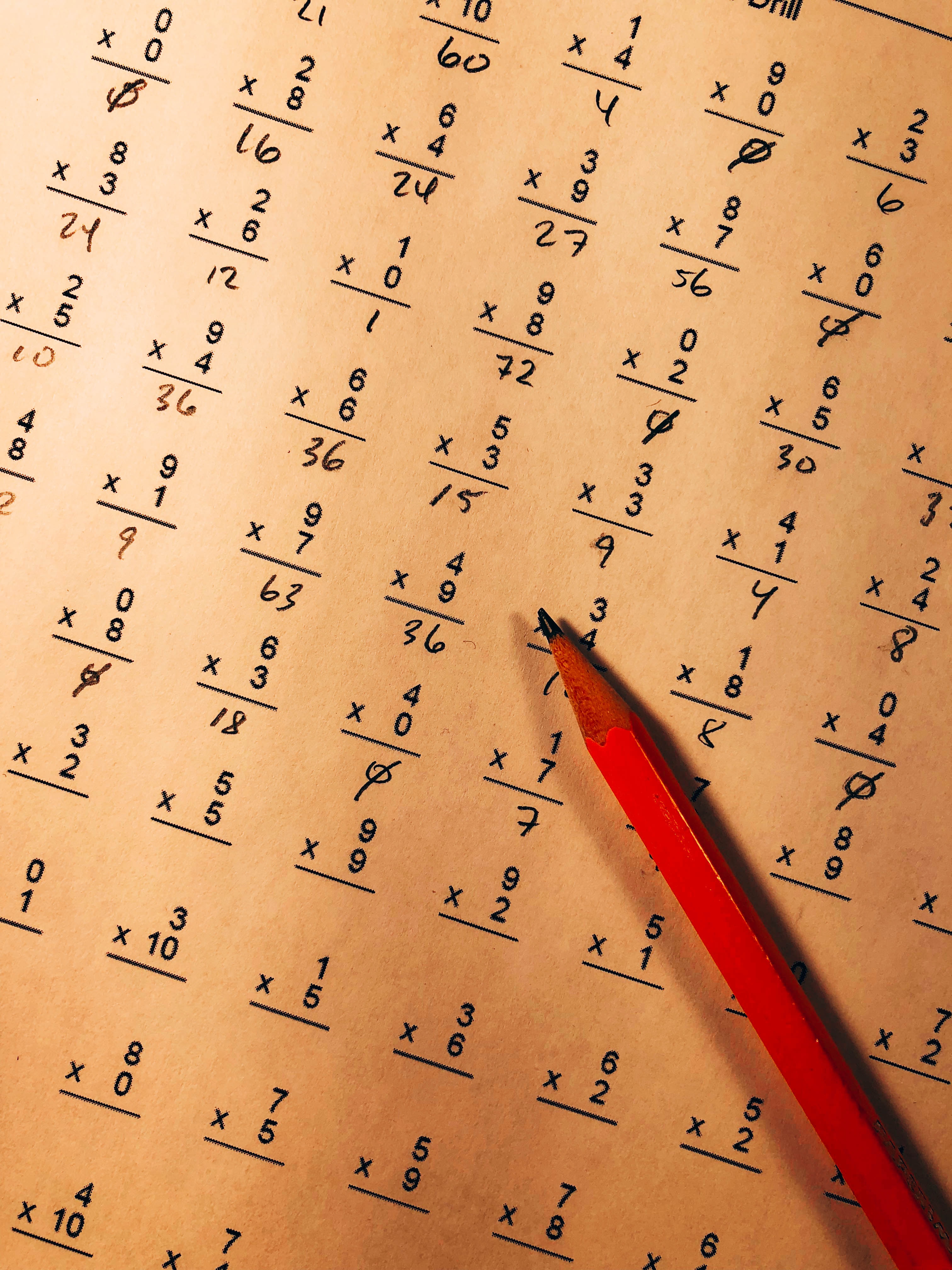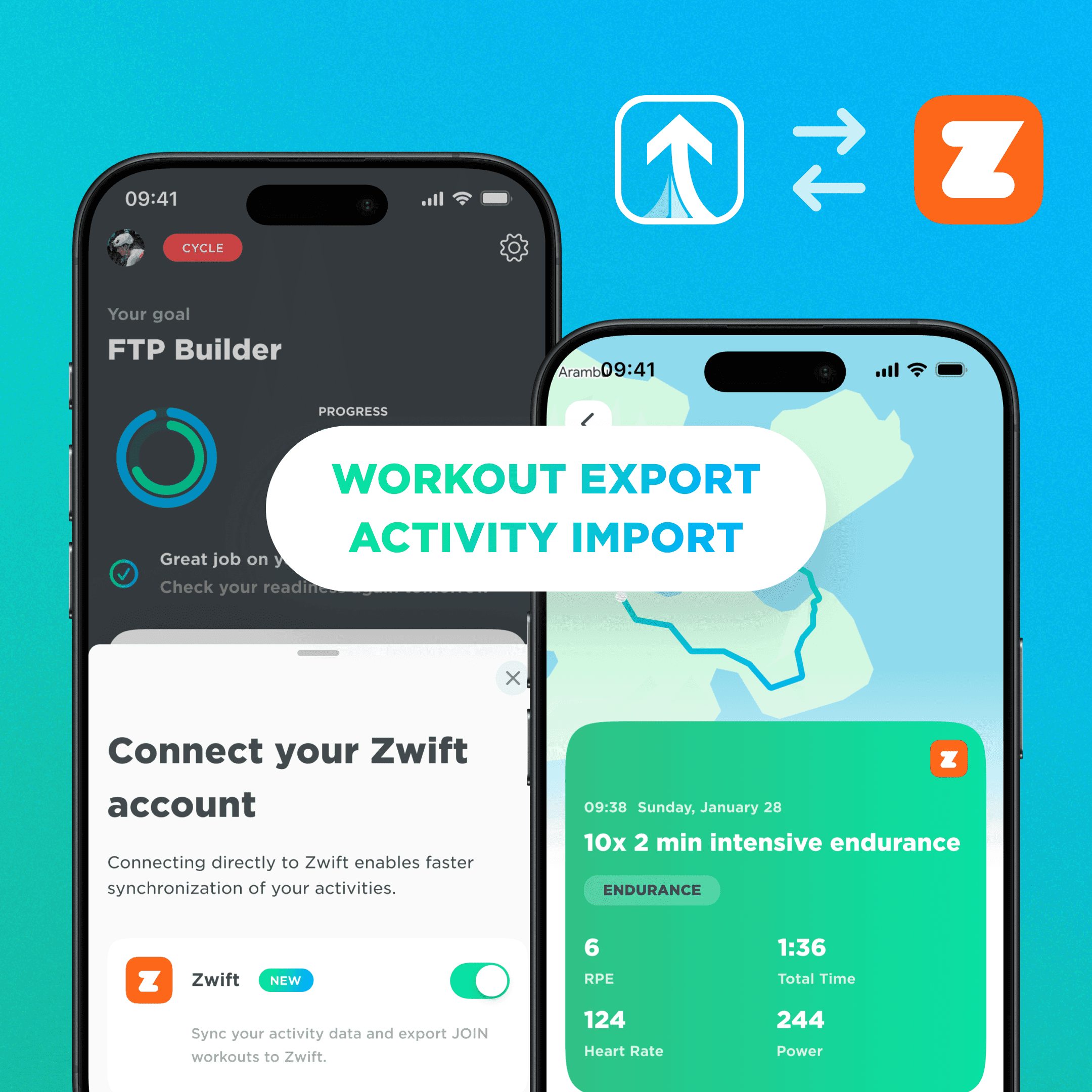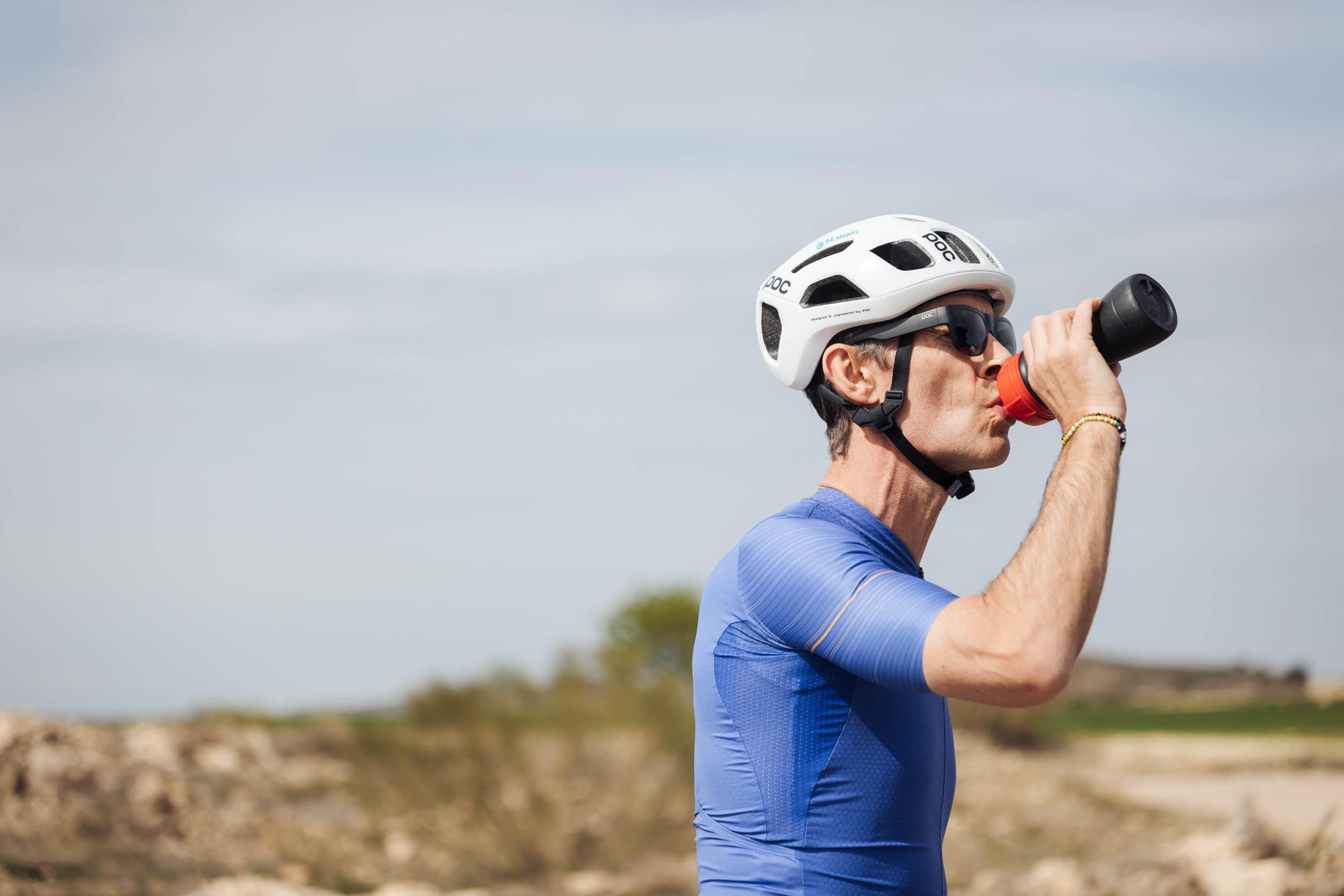The Ultimate Starter Guide to Cycling Training

Jul 15, 2020
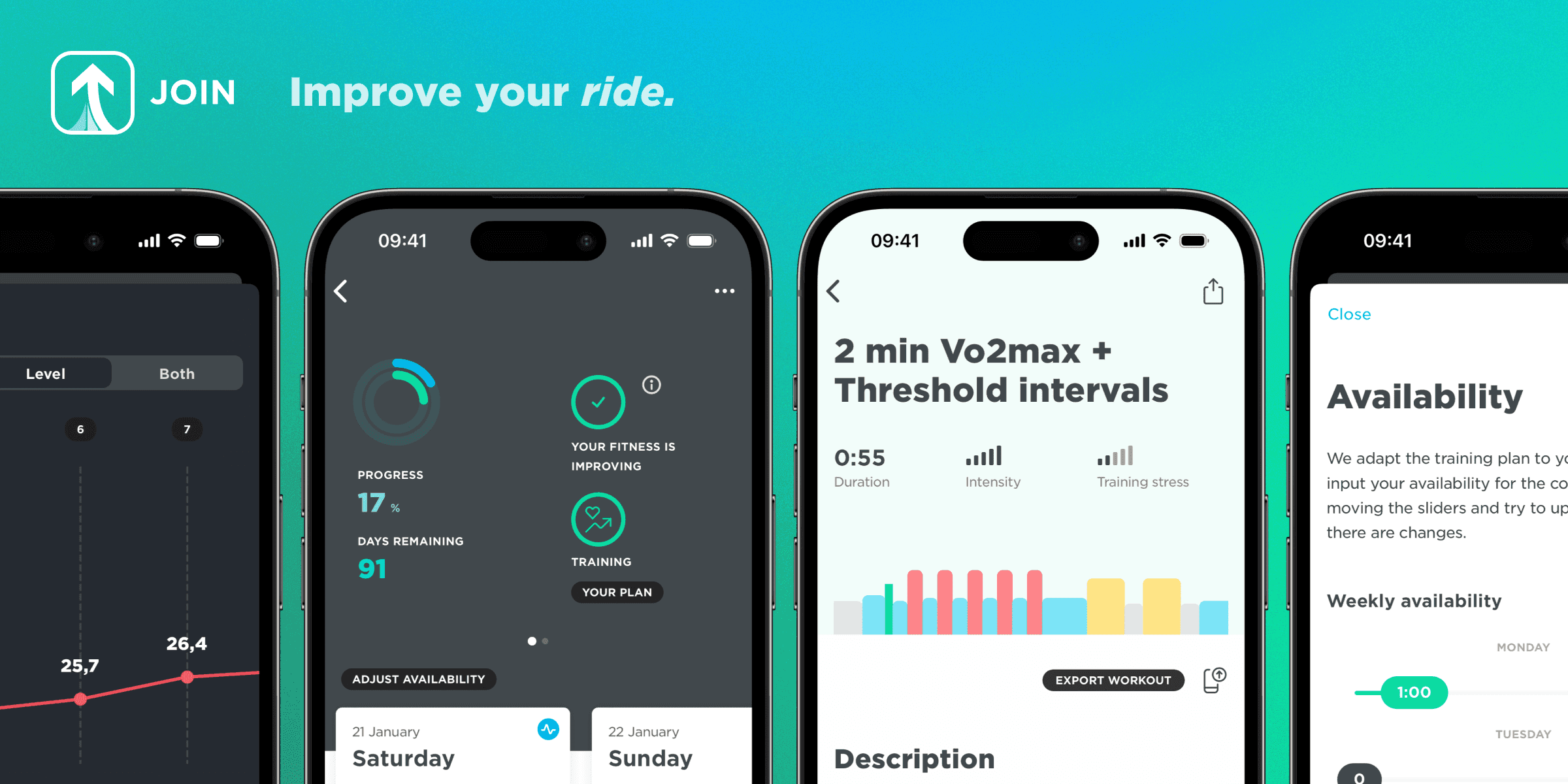
The Ultimate Starter Guide to Cycling Training
Jul 15, 2020

The Ultimate Starter Guide to Cycling Training

Jul 15, 2020

Before you start exercising vigorously there are some basics you should get familiar with first. This article will get you up to speed with some of the most essential must-knows.
How training works for cycling
We start with the principle of training in cycling. Training itself makes you tired, but then you recover and improve. Maybe you’ve heard of the supercompensation effect. Many people know the principle, but even at the very highest level it is still not always properly understood and executed. The principle is actually quite simple: you don’t get better during training, but you get better by recovering after training. A workout tires your body, during the subsequent recovery your body tries to prepare itself better for the next time you put training stress on it. That also means that if your body is still recovering from the last session, you shouldn’t start another training yet.
If you apply this rule properly you should start exercising at the very moment your body is not only recovered but even slightly stronger than before your last workout. And if you wait too long, the training effect will have faded already. The moment your body is at this peak depends on how fast your body recovers and how hard the last workout was. The better you get, the faster you recover, so the more training your body can handle and by that, the better you get. Et voila, just like that you are in a virtuous circle on your way to the pro ranks!
Consistency
Secondly the most scientifically proven concept of training is consistency. So before you start bothering yourself with intensity distributions, tapering or periodization, first make sure that you just go out and train. After a long training period one week of rest can allow the body to recover and improve. But training one week and taking a week of rest afterwards will bring you very little fitness gains. So first and foremost try to create training possibilities during the week and stick to them, instead of training one week for ten hours and the next week for only two. I have already mentioned intensity distribution, something you can write a good and long book about, which at least 50 authors have already done. So we won’t get too deep into the specifics in the context of this short article.
Train specifically
However, one very important rule is that you have to train specifically. To exaggerate: that means that if you want to train to become a better cyclist it makes no sense to start ski jumping. To put it differently, if you train for a long cyclosportive like La Marmotte, you need to analyze what specific qualities are required for a challenge like that and focus the training on those requirements. For the Marmotte you will need a lot of endurance, so you need to train long distances. And before anyone that tells you that a certain exercise or workout is really good, please realize there is no such thing as a good workout. There is only a good combination of workouts (or a bad one) depending on what level you are at, where your strengths and weaknesses lie and what you are training for. Once you know this, you can train on it specifically, i.e. in the right intensity zones.
Trainingzones, heart rate and power
Training zones can help to determine the right training intensity. You can work with heart rate or power zones, but if you have the choice, please use power based zones. Both are based on the fact that you have a certain heart rate or power level that you can keep up for an hour. This is called your threshold heart rate or functional threshold power (FTP). You can do an exercise test in a lab or do a 20 minute, DIY field test and take 95% of the power/heart rate to make a good estimate. This heart rate or power is set as the 100% when determining the training zones. There are different ways to classify the zones.
Difference between heart rate and power zones
Heart rate zones and power zones don’t match one on one. And please do not try to match them both anyway. Heart rate is highly influenced by the former workouts you have done, the amount of sleep, stress, fatigue, caffeine, dehydration and much more. Also power isn’t always working like clockwork, because sometimes you have a good day and sometimes you just don’t. But to put it short, if heart rate was a valid and reliable indicator to measure the intensity of a training session, then the power meter would have never been invented!
If one day your heart rate is lower for a certain power output then the week before, don’t start celebrating just yet but take into consideration the other factors that could play a role. But if you spot a trend over multiple workouts you are probably progressing. Hurray! Also, power zones differentiate above 100%. The reason for that is that the heart rate response is quite slow. It takes some time to rev up the heart rate. So while you were sprinting your lungs out over 40 seconds, your heart rate was probably still half way in the D3-zone. So looking at a heart rate monitor to check your performance at short sprints is quite useless.
Am I on the right track?
One of the most beautiful things about cycling is that everyone from young to old can still improve. In other sports that involve more power and explosiveness, that’s much more difficult. In addition to the physical part of cycling, you can also improve in many other areas. For example, you can improve the sleeping, nutrition, recovery, equipment, tactics or the mental part of cycling.
Some of this is easy to measure. For example, you can use an app to calculate your calorie intake and compare it with the calories you burned as indicated by your power meter. It is also possible to use your mobile phone or smartwatch to keep track of your amount of sleep. By adding more regularity to your sleep you can easily gain an hour’s sleep or even improve the quality of your sleep.
Keeping track of physical progress is a little more complicated. Of course there are plenty of programs that make nice graphs, but what exactly do you have to look at? And how do you check if you’re really making progress?
How to measure progress
First of all, we must ensure that progress can be measured objectively. But it is also very important to listen to your body to tell you if you are on the right track. Those subjective feelings are especially important when you have been ill or feel exhausted. But for now, we are looking at objective ways to show your progress. You can do this by following a standardized protocol. To chart your fitness accurately, you need to make it measurable, objective and reproducible. This way you can take the same measurement before and after a period of training and see if there is an improvement.
You can do this by measuring your speed over the same lap and see if your average speed has improved. But of course weather conditions have a big influence on this speed, especially the wind and the air pressure. For example, many recreational cyclists who are able to ride a fixed course at an average speed of 30 km/h in summer, might only average 28 km/h on the same course in winter. But their fitness could be at the same level, however, the higher air density in winter causes the drop in average speed. So speed is not the best way to measure your progress. But what do you have to measure then? Actually there is only one clear answer: power.
Progress of your endurance
To really measure the progress of your endurance, you need to see how long you can hold a certain amount of power. A common way is to look at the maximum average power you can hold for 20 minutes. To measure this you also need to make sure your test is standardized. So do the test under the same conditions, use the same power meter, do the same warm-up and make sure you have taken as much rest as before the other tests. With this in mind, it is advisable to do this indoors on a home/smart trainer rather than outdoors where the weather and the traffic are unpredictable factors.
But is the value of your 20 minutes of power the tell-all and the best way to determine your progress? That depends on your personal goals. If you want to do a 15-40 minute climb as fast as possible, this value is very interesting. But if you’re training for a 200 km ride with short climbs in it, this FTP value is a lot less interesting. To get a wider picture of your fitness you can also do standardized 1- and 5-minute tests. From these you can then determine your ‘power profile’.
What is a power profile?
A power profile is a graph or table that shows your best power for a specific time interval, often between 10 seconds and 3 hours. It shows the maximum power output over the last 3 months or the best ever. Improvement of a power at a certain time interval shows your improvement quite simply. Determining a power profile is currently the most widely used tool in cycling to map progress. But this method does not contain everything you want to know. Often it’s not about how fast you ride up one mountain, but how fast you ride up the fifth or maybe twentieth mountain over the course on a long ride. Deep in the finals of a race like the Tour of Flanders, the men and the boys are separated. After well over 200 km of racing and steep, sometimes cobbled climbs, someone’s power profile is less important, it’s all about the power you can still produce at that moment. Which rider’s power has fallen the least during the race?
Summarize
First of all, make sure you have a goal to work towards so that you know where you want to improve. Next, it is important to test yourself regularly. Please note that not every training should be a test! Test yourself with a standardized test, every 4 to 6 weeks is more than enough to know if you are on the right track. Last but certainly not least, look not only at your maximum power but also at the power you can still deliver in the last hour of a heavy training, a long cyclosportive ride or a race.
With this basis you have sufficient knowledge to set your goal and what is needed to achieve it. Make a plan and stick to it! If you don’t feel comfortable doing that on your own, a trainer can help you make a plan and a schedule so you have an incentive to keep going.
Before you start exercising vigorously there are some basics you should get familiar with first. This article will get you up to speed with some of the most essential must-knows.
How training works for cycling
We start with the principle of training in cycling. Training itself makes you tired, but then you recover and improve. Maybe you’ve heard of the supercompensation effect. Many people know the principle, but even at the very highest level it is still not always properly understood and executed. The principle is actually quite simple: you don’t get better during training, but you get better by recovering after training. A workout tires your body, during the subsequent recovery your body tries to prepare itself better for the next time you put training stress on it. That also means that if your body is still recovering from the last session, you shouldn’t start another training yet.
If you apply this rule properly you should start exercising at the very moment your body is not only recovered but even slightly stronger than before your last workout. And if you wait too long, the training effect will have faded already. The moment your body is at this peak depends on how fast your body recovers and how hard the last workout was. The better you get, the faster you recover, so the more training your body can handle and by that, the better you get. Et voila, just like that you are in a virtuous circle on your way to the pro ranks!
Consistency
Secondly the most scientifically proven concept of training is consistency. So before you start bothering yourself with intensity distributions, tapering or periodization, first make sure that you just go out and train. After a long training period one week of rest can allow the body to recover and improve. But training one week and taking a week of rest afterwards will bring you very little fitness gains. So first and foremost try to create training possibilities during the week and stick to them, instead of training one week for ten hours and the next week for only two. I have already mentioned intensity distribution, something you can write a good and long book about, which at least 50 authors have already done. So we won’t get too deep into the specifics in the context of this short article.
Train specifically
However, one very important rule is that you have to train specifically. To exaggerate: that means that if you want to train to become a better cyclist it makes no sense to start ski jumping. To put it differently, if you train for a long cyclosportive like La Marmotte, you need to analyze what specific qualities are required for a challenge like that and focus the training on those requirements. For the Marmotte you will need a lot of endurance, so you need to train long distances. And before anyone that tells you that a certain exercise or workout is really good, please realize there is no such thing as a good workout. There is only a good combination of workouts (or a bad one) depending on what level you are at, where your strengths and weaknesses lie and what you are training for. Once you know this, you can train on it specifically, i.e. in the right intensity zones.
Trainingzones, heart rate and power
Training zones can help to determine the right training intensity. You can work with heart rate or power zones, but if you have the choice, please use power based zones. Both are based on the fact that you have a certain heart rate or power level that you can keep up for an hour. This is called your threshold heart rate or functional threshold power (FTP). You can do an exercise test in a lab or do a 20 minute, DIY field test and take 95% of the power/heart rate to make a good estimate. This heart rate or power is set as the 100% when determining the training zones. There are different ways to classify the zones.
Difference between heart rate and power zones
Heart rate zones and power zones don’t match one on one. And please do not try to match them both anyway. Heart rate is highly influenced by the former workouts you have done, the amount of sleep, stress, fatigue, caffeine, dehydration and much more. Also power isn’t always working like clockwork, because sometimes you have a good day and sometimes you just don’t. But to put it short, if heart rate was a valid and reliable indicator to measure the intensity of a training session, then the power meter would have never been invented!
If one day your heart rate is lower for a certain power output then the week before, don’t start celebrating just yet but take into consideration the other factors that could play a role. But if you spot a trend over multiple workouts you are probably progressing. Hurray! Also, power zones differentiate above 100%. The reason for that is that the heart rate response is quite slow. It takes some time to rev up the heart rate. So while you were sprinting your lungs out over 40 seconds, your heart rate was probably still half way in the D3-zone. So looking at a heart rate monitor to check your performance at short sprints is quite useless.
Am I on the right track?
One of the most beautiful things about cycling is that everyone from young to old can still improve. In other sports that involve more power and explosiveness, that’s much more difficult. In addition to the physical part of cycling, you can also improve in many other areas. For example, you can improve the sleeping, nutrition, recovery, equipment, tactics or the mental part of cycling.
Some of this is easy to measure. For example, you can use an app to calculate your calorie intake and compare it with the calories you burned as indicated by your power meter. It is also possible to use your mobile phone or smartwatch to keep track of your amount of sleep. By adding more regularity to your sleep you can easily gain an hour’s sleep or even improve the quality of your sleep.
Keeping track of physical progress is a little more complicated. Of course there are plenty of programs that make nice graphs, but what exactly do you have to look at? And how do you check if you’re really making progress?
How to measure progress
First of all, we must ensure that progress can be measured objectively. But it is also very important to listen to your body to tell you if you are on the right track. Those subjective feelings are especially important when you have been ill or feel exhausted. But for now, we are looking at objective ways to show your progress. You can do this by following a standardized protocol. To chart your fitness accurately, you need to make it measurable, objective and reproducible. This way you can take the same measurement before and after a period of training and see if there is an improvement.
You can do this by measuring your speed over the same lap and see if your average speed has improved. But of course weather conditions have a big influence on this speed, especially the wind and the air pressure. For example, many recreational cyclists who are able to ride a fixed course at an average speed of 30 km/h in summer, might only average 28 km/h on the same course in winter. But their fitness could be at the same level, however, the higher air density in winter causes the drop in average speed. So speed is not the best way to measure your progress. But what do you have to measure then? Actually there is only one clear answer: power.
Progress of your endurance
To really measure the progress of your endurance, you need to see how long you can hold a certain amount of power. A common way is to look at the maximum average power you can hold for 20 minutes. To measure this you also need to make sure your test is standardized. So do the test under the same conditions, use the same power meter, do the same warm-up and make sure you have taken as much rest as before the other tests. With this in mind, it is advisable to do this indoors on a home/smart trainer rather than outdoors where the weather and the traffic are unpredictable factors.
But is the value of your 20 minutes of power the tell-all and the best way to determine your progress? That depends on your personal goals. If you want to do a 15-40 minute climb as fast as possible, this value is very interesting. But if you’re training for a 200 km ride with short climbs in it, this FTP value is a lot less interesting. To get a wider picture of your fitness you can also do standardized 1- and 5-minute tests. From these you can then determine your ‘power profile’.
What is a power profile?
A power profile is a graph or table that shows your best power for a specific time interval, often between 10 seconds and 3 hours. It shows the maximum power output over the last 3 months or the best ever. Improvement of a power at a certain time interval shows your improvement quite simply. Determining a power profile is currently the most widely used tool in cycling to map progress. But this method does not contain everything you want to know. Often it’s not about how fast you ride up one mountain, but how fast you ride up the fifth or maybe twentieth mountain over the course on a long ride. Deep in the finals of a race like the Tour of Flanders, the men and the boys are separated. After well over 200 km of racing and steep, sometimes cobbled climbs, someone’s power profile is less important, it’s all about the power you can still produce at that moment. Which rider’s power has fallen the least during the race?
Summarize
First of all, make sure you have a goal to work towards so that you know where you want to improve. Next, it is important to test yourself regularly. Please note that not every training should be a test! Test yourself with a standardized test, every 4 to 6 weeks is more than enough to know if you are on the right track. Last but certainly not least, look not only at your maximum power but also at the power you can still deliver in the last hour of a heavy training, a long cyclosportive ride or a race.
With this basis you have sufficient knowledge to set your goal and what is needed to achieve it. Make a plan and stick to it! If you don’t feel comfortable doing that on your own, a trainer can help you make a plan and a schedule so you have an incentive to keep going.
Before you start exercising vigorously there are some basics you should get familiar with first. This article will get you up to speed with some of the most essential must-knows.
How training works for cycling
We start with the principle of training in cycling. Training itself makes you tired, but then you recover and improve. Maybe you’ve heard of the supercompensation effect. Many people know the principle, but even at the very highest level it is still not always properly understood and executed. The principle is actually quite simple: you don’t get better during training, but you get better by recovering after training. A workout tires your body, during the subsequent recovery your body tries to prepare itself better for the next time you put training stress on it. That also means that if your body is still recovering from the last session, you shouldn’t start another training yet.
If you apply this rule properly you should start exercising at the very moment your body is not only recovered but even slightly stronger than before your last workout. And if you wait too long, the training effect will have faded already. The moment your body is at this peak depends on how fast your body recovers and how hard the last workout was. The better you get, the faster you recover, so the more training your body can handle and by that, the better you get. Et voila, just like that you are in a virtuous circle on your way to the pro ranks!
Consistency
Secondly the most scientifically proven concept of training is consistency. So before you start bothering yourself with intensity distributions, tapering or periodization, first make sure that you just go out and train. After a long training period one week of rest can allow the body to recover and improve. But training one week and taking a week of rest afterwards will bring you very little fitness gains. So first and foremost try to create training possibilities during the week and stick to them, instead of training one week for ten hours and the next week for only two. I have already mentioned intensity distribution, something you can write a good and long book about, which at least 50 authors have already done. So we won’t get too deep into the specifics in the context of this short article.
Train specifically
However, one very important rule is that you have to train specifically. To exaggerate: that means that if you want to train to become a better cyclist it makes no sense to start ski jumping. To put it differently, if you train for a long cyclosportive like La Marmotte, you need to analyze what specific qualities are required for a challenge like that and focus the training on those requirements. For the Marmotte you will need a lot of endurance, so you need to train long distances. And before anyone that tells you that a certain exercise or workout is really good, please realize there is no such thing as a good workout. There is only a good combination of workouts (or a bad one) depending on what level you are at, where your strengths and weaknesses lie and what you are training for. Once you know this, you can train on it specifically, i.e. in the right intensity zones.
Trainingzones, heart rate and power
Training zones can help to determine the right training intensity. You can work with heart rate or power zones, but if you have the choice, please use power based zones. Both are based on the fact that you have a certain heart rate or power level that you can keep up for an hour. This is called your threshold heart rate or functional threshold power (FTP). You can do an exercise test in a lab or do a 20 minute, DIY field test and take 95% of the power/heart rate to make a good estimate. This heart rate or power is set as the 100% when determining the training zones. There are different ways to classify the zones.
Difference between heart rate and power zones
Heart rate zones and power zones don’t match one on one. And please do not try to match them both anyway. Heart rate is highly influenced by the former workouts you have done, the amount of sleep, stress, fatigue, caffeine, dehydration and much more. Also power isn’t always working like clockwork, because sometimes you have a good day and sometimes you just don’t. But to put it short, if heart rate was a valid and reliable indicator to measure the intensity of a training session, then the power meter would have never been invented!
If one day your heart rate is lower for a certain power output then the week before, don’t start celebrating just yet but take into consideration the other factors that could play a role. But if you spot a trend over multiple workouts you are probably progressing. Hurray! Also, power zones differentiate above 100%. The reason for that is that the heart rate response is quite slow. It takes some time to rev up the heart rate. So while you were sprinting your lungs out over 40 seconds, your heart rate was probably still half way in the D3-zone. So looking at a heart rate monitor to check your performance at short sprints is quite useless.
Am I on the right track?
One of the most beautiful things about cycling is that everyone from young to old can still improve. In other sports that involve more power and explosiveness, that’s much more difficult. In addition to the physical part of cycling, you can also improve in many other areas. For example, you can improve the sleeping, nutrition, recovery, equipment, tactics or the mental part of cycling.
Some of this is easy to measure. For example, you can use an app to calculate your calorie intake and compare it with the calories you burned as indicated by your power meter. It is also possible to use your mobile phone or smartwatch to keep track of your amount of sleep. By adding more regularity to your sleep you can easily gain an hour’s sleep or even improve the quality of your sleep.
Keeping track of physical progress is a little more complicated. Of course there are plenty of programs that make nice graphs, but what exactly do you have to look at? And how do you check if you’re really making progress?
How to measure progress
First of all, we must ensure that progress can be measured objectively. But it is also very important to listen to your body to tell you if you are on the right track. Those subjective feelings are especially important when you have been ill or feel exhausted. But for now, we are looking at objective ways to show your progress. You can do this by following a standardized protocol. To chart your fitness accurately, you need to make it measurable, objective and reproducible. This way you can take the same measurement before and after a period of training and see if there is an improvement.
You can do this by measuring your speed over the same lap and see if your average speed has improved. But of course weather conditions have a big influence on this speed, especially the wind and the air pressure. For example, many recreational cyclists who are able to ride a fixed course at an average speed of 30 km/h in summer, might only average 28 km/h on the same course in winter. But their fitness could be at the same level, however, the higher air density in winter causes the drop in average speed. So speed is not the best way to measure your progress. But what do you have to measure then? Actually there is only one clear answer: power.
Progress of your endurance
To really measure the progress of your endurance, you need to see how long you can hold a certain amount of power. A common way is to look at the maximum average power you can hold for 20 minutes. To measure this you also need to make sure your test is standardized. So do the test under the same conditions, use the same power meter, do the same warm-up and make sure you have taken as much rest as before the other tests. With this in mind, it is advisable to do this indoors on a home/smart trainer rather than outdoors where the weather and the traffic are unpredictable factors.
But is the value of your 20 minutes of power the tell-all and the best way to determine your progress? That depends on your personal goals. If you want to do a 15-40 minute climb as fast as possible, this value is very interesting. But if you’re training for a 200 km ride with short climbs in it, this FTP value is a lot less interesting. To get a wider picture of your fitness you can also do standardized 1- and 5-minute tests. From these you can then determine your ‘power profile’.
What is a power profile?
A power profile is a graph or table that shows your best power for a specific time interval, often between 10 seconds and 3 hours. It shows the maximum power output over the last 3 months or the best ever. Improvement of a power at a certain time interval shows your improvement quite simply. Determining a power profile is currently the most widely used tool in cycling to map progress. But this method does not contain everything you want to know. Often it’s not about how fast you ride up one mountain, but how fast you ride up the fifth or maybe twentieth mountain over the course on a long ride. Deep in the finals of a race like the Tour of Flanders, the men and the boys are separated. After well over 200 km of racing and steep, sometimes cobbled climbs, someone’s power profile is less important, it’s all about the power you can still produce at that moment. Which rider’s power has fallen the least during the race?
Summarize
First of all, make sure you have a goal to work towards so that you know where you want to improve. Next, it is important to test yourself regularly. Please note that not every training should be a test! Test yourself with a standardized test, every 4 to 6 weeks is more than enough to know if you are on the right track. Last but certainly not least, look not only at your maximum power but also at the power you can still deliver in the last hour of a heavy training, a long cyclosportive ride or a race.
With this basis you have sufficient knowledge to set your goal and what is needed to achieve it. Make a plan and stick to it! If you don’t feel comfortable doing that on your own, a trainer can help you make a plan and a schedule so you have an incentive to keep going.
More Relevant Articles
Discover valuable training tips to enhance your cycling performance.
More Relevant Articles
Discover valuable training tips to enhance your cycling performance.
More Relevant Articles
Discover valuable training tips to enhance your cycling performance.

Unlock Your Cycling Potential Today
Join thousands of cyclists who have improved their performance with JOIN's training plans.
Probeer het nu
Meer Informatie

Unlock Your Cycling Potential Today
Join thousands of cyclists who have improved their performance with JOIN's training plans.
By joining, you agree to our Terms and Conditions and our Privacy Policy.

Unlock Your Cycling Potential Today
Join thousands of cyclists who have improved their performance with JOIN's training plans.
By joining, you agree to our Terms and Conditions and our Privacy Policy.
Join Now
Join Now
